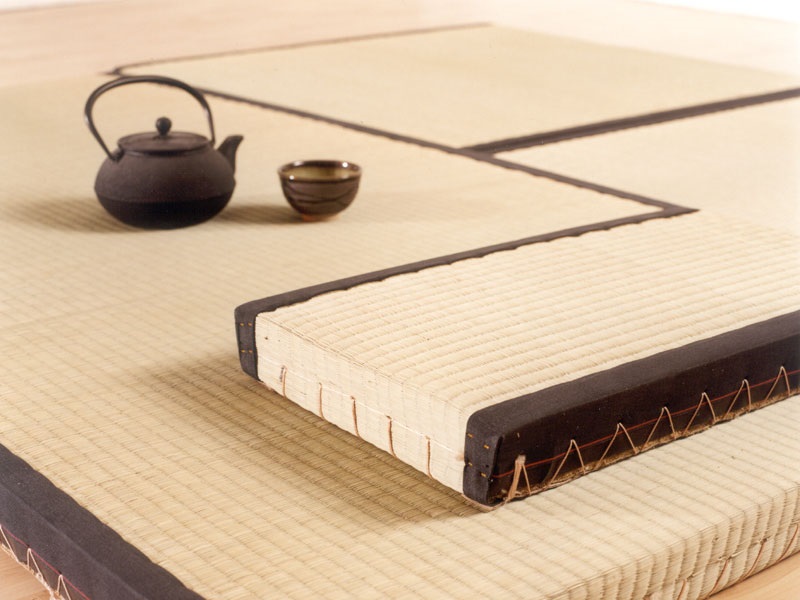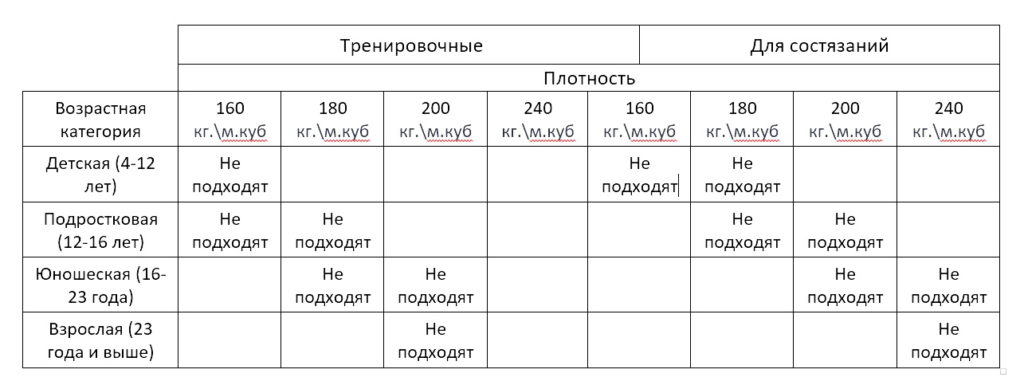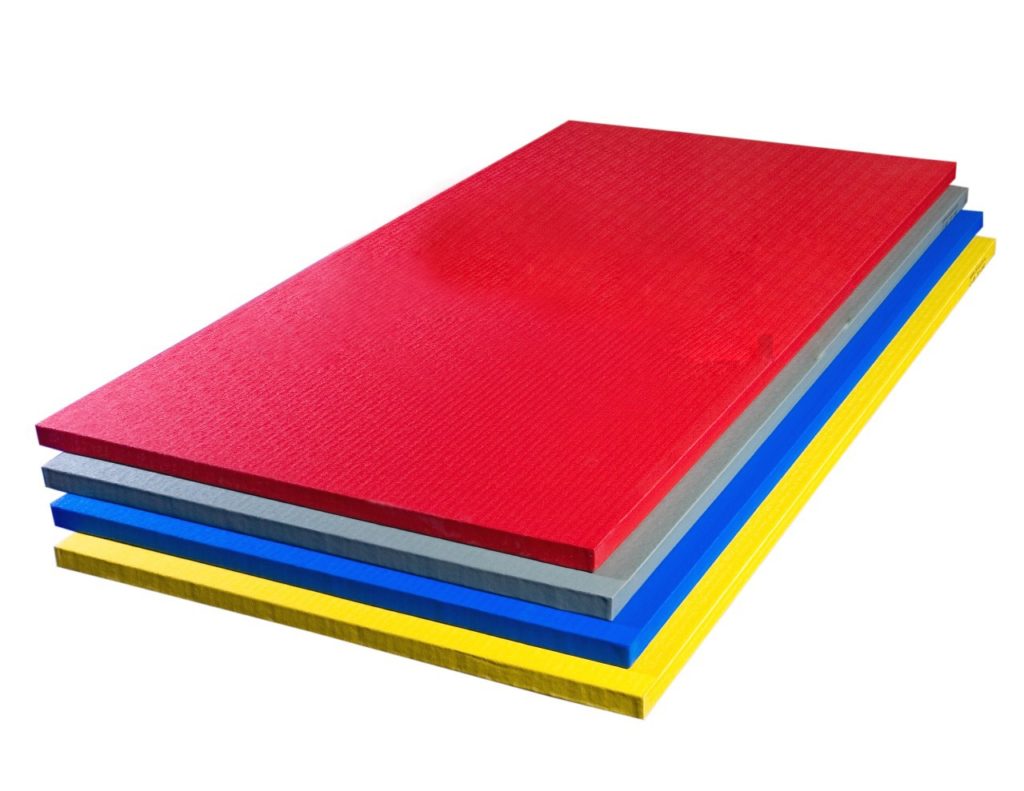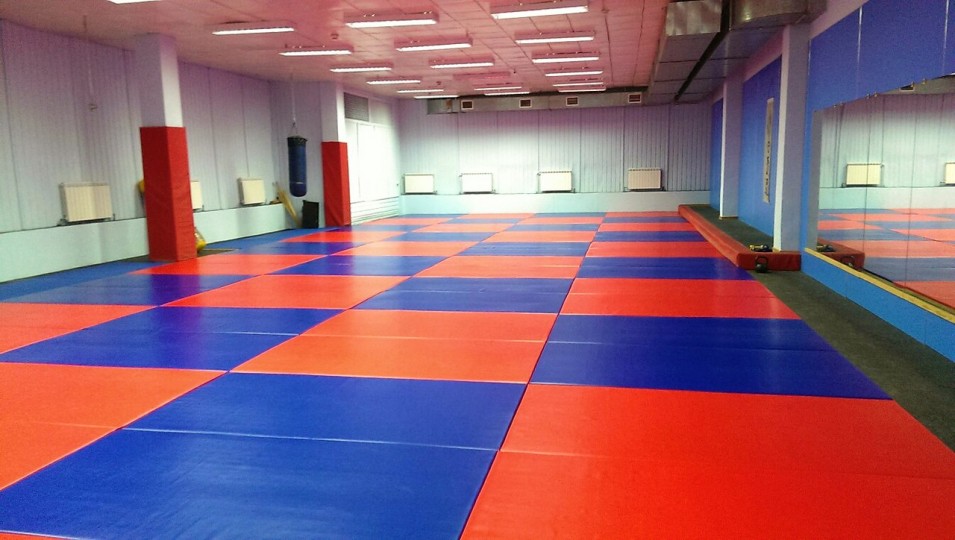Recently, wrestling, power sports have become increasingly popular both in large cities and in the regions. This is due to several factors, including the fact that some types of martial arts, such as sambo, appeared in our country. And these sports are simply impossible without their inventory basis - tatami. What to look for when choosing a tatami, mat, which one is better to buy for the school section, and which one for a professional gym, our article will give you advice. The editorial staff of the site "bestx.htgetrid.com/en/" offers you an overview of the best sports tatami and mats for martial arts for 2020.
History of origin

If we talk about tatami, the flooring comes from Japan, the word itself is translated as "something that can be rolled up." In fact, a tatami is a mat or mattress, the shell of which is woven from straw, and is stuffed with straw. The edges of the mat (heri) were trimmed with decorative fabric.
Since the Japanese traditionally take off their shoes before entering a dwelling, the straw texture should have tactilely reminded of the touch of herbs and flowers. Even the arrangement of the tatami itself had to comply with certain canons. After all, appropriately located tatami could speak of a festive atmosphere or, conversely, of mourning. Until now, traditional mats, tatami mats are made with a pattern or textured surface resembling straw. The size of a modern mat, as a rule, corresponds to the Japanese canons, and is either 90 by 90 cm, or 90 by 180 with a thickness of about five centimeters. From such mats, for example, wrestling carpets with a total area of 12x12 meters are assembled like a puzzle. But the filling has changed, since the straw filling is expensive and short-lived. Authentic mats are traditionally used only during tea ceremonies.
Modern coatings
The mat today does not have such clear, unchanging dimensions as before, since the scope of its use is extremely wide. Often the area, thickness, color and design are ordered individually for the specific needs of a sports club or fitness center. In the opinion of buyers, such an ordering option is very convenient, since it allows not only to accurately select the coating depending on what the mat is for (for training, for martial arts), but also to place sponsored advertising on its surface.
What coatings are

The main types of mats are:
- Classic, the dimensions of which are given above;
- Budo - mat - the edges of such a covering are made with a dovetail to compose the area of the required dimension;
- Roll - mat - small area, narrow, ideal choice for yoga or fitness. They are easy to roll up, so they do not take up much space during storage.
The question of how to choose a tatami is not as simple as it might seem at first glance, because its characteristics have a lot of nuances. First of all, you should understand the most important thing, the filling, or correctly speaking, the tatami filler. The most common tatami padding is made of foam rubber or PVB.
The advantages of this material:
- No deformation with a strong impact amplitude;
- Service life up to 30 years;
- Dense texture;
- Large weight, preventing them from slipping during use;
- Acceptable price.
Disadvantages of filler:
- Large weight;
- Lack of moisture resistance (if there is no double-sided shell);
- With long-term use, they crumble.

Its direct competitor made of synthetic wool is polyethylene foam (PPE). PPE is devoid of all the disadvantages of PVB, but it easily loses its appearance and has increased rigidity.
Here it should be explained what it is - rigidity, and how it differs from density. Density determines how well the mat is packed with material, and therefore how comfortable it is to walk on. The parameter is checked by transferring the entire weight of the athlete to one leg. If, standing on one leg, the foot completely goes into the tatami, then it is not suitable for sports use. Stiffness determines how comfortable it is to lie down, and even more correctly, the athlete falls on the mat. Accordingly, what is suitable for adults will be unacceptable for a child. In addition, it is worth remembering the difference in the required density of the training tatami with the competitive ones. The difference between these two types of sports mode, the possibility of their application, taking into account the age category, is clearly shown in the following comparison table:
 The density and hardness of the coating directly depend on its thickness. The same, in turn, is selected depending on the possible application of the coating. If your selection criteria are:
The density and hardness of the coating directly depend on its thickness. The same, in turn, is selected depending on the possible application of the coating. If your selection criteria are:
- Fitness, gymnastics, then a mat up to two centimeters thick is suitable;
- Karate, Thai boxing, taekwondo - up to 2.5 centimeters;
- Wrestling (Greco-Roman, freestyle), Sambo - up to 3 centimeters;
- Jiu-jitsu, sumo, ultimate fighting - up to 4 centimeters.
Thicker coatings are made under the individual order of the sports club, section.
The next important question, after determining the filling material, its thickness, will be the choice of coating. Low-cost covers are made from a fabric base, covering the padding on one side. But such a one-sided mat absorbs moisture quickly, while losing its shape and hygiene indicators. In addition, the cloth covered coating wears out quickly and does not provide a clear grip on the athlete's feet. Moreover, the texture of the surface, as well as the density, is also selected for a certain type of sports activity:
- Horizontal straw texture - imitates the structure of the classic Japanese tatami made of rice straw, allowing the wrestler's foot to move freely during the longitudinal stride. The horizontal texture is best combined with padding, whose thickness is from 4 centimeters. Accordingly, he will be suitable for training in jujitsu, judo, aikido.
- Braided straw - differs from the previous one by a slightly greater resistance to the wrestler's step. And the interweaving texture measuring 10 by 10 centimeters changes its direction, bending in one direction or another of the step. Used in sports such as acrobatics, tai chi, qigong.
- Square wicker straw - the same size as a simple wicker mat, 10x10. The embossing is done with vertical, horizontal stripes, which do not allow the athlete's foot to slip, but easily allowing it to unfold on the heel. This rigid texture is specially designed for taekwondo.
- Jute texture - represents zigzag stripes located diagonally. Provides maximum resistance when moving, creating a perfect grip of the foot.
- KWON is embossed and has received recommendations from many international martial arts federations. It has a cross or four-leaf clover pattern. Like the square braided straw, it allows for a non-slip heel pivot, while preventing it from being used for large hits. That is, it will not be suitable for sambo, judo, but it will be an ideal choice for taekwondo and karate competitions.
The material from which the tatami shell is made is called JUDO, in fact it is ordinary PVC that we use every day. JUDO is moisture resistant, lasts a long time, it is used by the best manufacturers of sports equipment. New among the coatings - anti-skid material, easy to clean, does not cause allergic reactions, which is especially important for play areas. For children, they also choose a shell whose seams are soldered, not sewn, since the last coating has a seam that can harm the child.
Which company is better to prefer tatami?

The three countries whose sports mats are the most sold in our country are Asian firms (Taiwan, China, Korea), Russian and European. The manufacturers of these countries have adopted the following quality standard:
- A + - the highest standard, the most expensive for the price, provided as a rule by European companies;
- A - decent quality made in accordance with international standards, average price: from 1500 per square meter;
- B - average standard, mattresses may have certain discrepancies in size, thickness, weight;
- C - poor quality of performance, which is primarily indicated by an unpleasant odor, rough performance, the possibility of an allergic reaction;
- D is the lowest standard, whose origin raises questions, and the material of larger companies rejected according to environmental, fire safety standards is used as filling.
It will be natural to want to purchase sports equipment of category A or B in an online store. However, often the stores themselves, when purchasing an outright non-stock, assign it a more expensive category, denoting the European country of the manufacturer. Moreover, traditionally there are fears when buying Chinese goods, and sports carpets are no exception. However, a number of companies in China and Taiwan produce the highest quality products, exporting them to Japan, the USA, but due to the high price category this inventory does not reach us.
Therefore, the best option to avoid mistakes when choosing is to order an online mattress from a Russian manufacturer. Since in this case you are guaranteed that the description of the coverage will correspond to the purchased inventory. In addition, you can get a sample of the coating, order it according to your preferences and receive a quality guarantee.
Rating of quality sports tatami, martial arts mats for 2020
Polyurethane foam filler
Tatami "Economy"

The popularity of models with PVB filling is explained by availability, good technical characteristics and democratic price. The Economy model confirms all these postulates. Its size is a meter by two with a thickness of 4 centimeters will perfectly ensure the softness of martial arts training with a small amplitude of strikes. Economy can be used as a substrate under another, thinner sports mattress or become an element of noise insulation in a children's room. If the question of how much it costs to protect your child from injuries, and yourself from the neighbor's banging on the battery, is relevant for you, then Economy is undoubtedly your choice.
Advantages:
- Up to five years of operation;
- Low price;
- Nice appearance;
- Several color options.
Disadvantages:
- No fabric cover.
Tatami "Aka"

A more expensive, semi-professional model that has good functionality and has earned the best reviews from athletes engaged in strength exercises. Aka has a standard size meter by two, four centimeters thick and 160 kg / cbm density. Aka filler - fine-grained foam rubber, protected on top by PVC fabric of South Korean production. Thus, the slab is protected from moisture and abrasion, and the athlete is comfortable to move on it. The fabric is odorless, non-toxic, gives the room a more aesthetic appearance than an uncoated plate. The operating time declared by the manufacturer is up to 20 years, the warranty is for two years.
Advantages:
- Large weight that does not allow the mat to slide during training;
- A hygienic surface that is easy to maintain;
- Non toxic;
- Long service time.
Disadvantages:
- Cover only on the top side.
Tatami with JUDO fabric

The covering is of a standard size 1x1 meter, which allows making wrestling mats of the required size from the slabs. On both sides of the PVB filler is covered with PVC material, which facilitates its transportation, storage and operation. Such a coating does not absorb moisture, does not get dirty, and does not require special care. On the upper side of the JUDO, the fabric is covered with anti-slip, which does not allow the athlete's foot to slip when performing techniques. This makes the mat safe and professional. With a standard density of 160 kilograms per square meter, the firmness of the mattress is sufficient for sports activities for both adults and children.
Advantages:
- Anti-slip coating;
- Long operating time;
- Hygienically processed surface;
- Double-sided cover;
- Convenient size.
Disadvantages:
- Not noticed.
Rice straw JUDO

Giving the upper fabric a straw texture is not just a tribute to the tradition of native Japanese mats, it is also a reliable adhesion of the athlete's foot to the surface, regardless of the type of movement, load on the leg. For this reason, the Rice Straw Mat on JUDO fabric has a density of 750 g / m2, which makes it suitable for serious sports. Usually, such carpets are fixed with Velcro or slats around the perimeter so that they do not slip, do not lose their uniformity. But this mattress has an anti-slip coating on the back, which makes additional fixing measures unnecessary. At the same time, the service life of such mattresses reaches 20 years of intensive training.
Advantages:
- Long service life;
- Fast assembly of carpet from blocks;
- Anti-slip texture;
- Environmentally friendly material.
Disadvantages:
- The price is higher than that of analogues.
With PE foam filling
Tatami - puzzle

Classic children's tatami mat with long edges "dovetail". You can purchase several blocks of different colors, from which the child will make a carpet at will. This will add enthusiasm, incentive to the child in his sports activities, turning even the preparatory procedure for laying the stove into a fun game. At the same time, it is rare what popular models with PES filler are available at such a budget price and with excellent density quality. If you need coverage for gymnastics, light physical exercise, then there is no better option than a tatami puzzle.
Advantages:
- Colorful appearance;
- Installed with other similar slabs in any size carpet;
- Easy to store and transport;
- Low price.
Disadvantages:
- Without shell;
- For light sports activities only.
Wrestling mat, chemical stitched

The review of wrestling tatami is completed by a chemically stitched model made from environmentally friendly PPE. The best training option with a density of 140 kg per square meter with a thickness of five centimeters. It perfectly dampens wide-amplitude strikes, which makes it possible to use it for almost all types of martial arts, karate, aikido, sambo and others. The coating, despite its 5 cm thickness, is lightweight, and being chemically stitched, it lacks thread seams that can harm the health of an athlete.
Advantages:
- Easy;
- Price category - inexpensive coverage;
- Sound insulating properties;
- Provides comfort for large impacts on the surface.
Disadvantages:
- The cover must be purchased on order;
- For training purposes only.
Conclusion
The rating does not claim to be "the ultimate truth" and the author must have forgotten to mention important, in the reader's opinion, information. Therefore, if the reader has additions on where to buy budo-mats, what fillers are, be sure to share such information with other readers.












